
Adapted from a booklet offered by YRM Publications
The Christmas super-holiday is the standard for popular observances today. Families will gather on December 25, gorge themselves on ham and turkey, stare at a decorated tree while a swooning Bing provides the ambience, and exchange billions of dollars in gifts, many of them unwanted. A crescendo of months of retailer hype will climax on one grand day of the Savior’s supposed birth.
But hold on. Amid the bells and booze, frolicking elves and fruitcake, many sense that something isn’t right. If Christmas is a celebration of the birth of the Savior at Bethlehem, who came to bring peace on earth and good will toward men, why isn’t there more peace and good will in our world? With so many millions observing this holiday, should not our world be changing for the better with each celebration? Is this not what a “religious” observance is supposed to accomplish?
Maybe the problem is simply that people fail to catch and hold the “spirit”of Christmas. Or could the holiday itself be flawed? Why do so many people sense an emptiness at this time of year, a major letdown amid the torn gift-wrapping and crushed ribbon bows.
Where’s the Scriptural Christmas?
Christmas, after all, is supposed to be rooted in the Bible. It is assumed to honor the birth of the Savior of men in a manger at Bethlehem. (Its name is a contraction for “Christ’s Mass.”) But the overblown rites of Santa Claus, tinsel, Rudolph, gift exchanging, and football mostly obscure any religious overtones of the observance.
A revealing survey would be to poll frantic Christmas shoppers to find out how many know the origins of Christmas. Do YOU know what Christmas is all about? Are you mildly amused each year with newspaper and magazine articles detailing the strange, irreverent customs of Christmas? On the other hand, maybe you have found these facts somewhat troubling. Isn’t it time you honestly investigated the matter? If Christmas is that significant – the biggest holiday of the year demanding a great deal of your time and money – shouldn’t you at least know what it is actually all about? This is especially serious considering the religious flavor of Christmas. The Creator in heaven may just have a definite opinion about the observance of this holiday that you need to discover.
Do you observe Christmas because you believe it is in the Bible? Try as you might, you will not find a hint of Christmas anywhere in the Scriptures. There is neither a call to observe it nor an example where anyone in the Bible did so. Shocking? Millions are oblivious to this simple fact. As one authority puts it, “There is no historical evidence that our [Savior’s] birthday was celebrated during the apostolic or early post-apostolic times,” Christmas, p. 47, The New Schaff-Herzog Encyclopedia of Religious Knowledge. Another writer makes this astounding statement: “The day was not one of the early feasts of the Christian church. In fact the observance of birthdays was condemned as a heathen custom repugnant to Christians,” The American Book of Days, by George W. Douglas.
What a revealing statement! The single most important religious holiday observed today in Christianity would have been FORBIDDEN in early New Testament times. Many historians and Biblical scholars corroborate this fact. Now read a candid admission from the New Catholic Encyclopedia, “Inexplicable though it seems, the date of the [Messiah’s] birth is not known. The Gospels indicate neither the day nor the month,” vol. 3, p. 656. And the Cyclopedia of Biblical, Theological and Ecclesiastical Literature says, “The fathers of the first three centuries do not speak of any special observance of the nativity. No corresponding festival was presented by the Old Testament ... the day and month of the birth of [the Messiah] are nowhere stated in the Gospel history, and cannot be certainly determined,” Christmas, p. 276.
If Christmas is as popular and pervasive a religious holiday as retail sales indicate, why isn’t it found anywhere in the Bible? Why aren’t we told the month – let alone the day – of the Savior’s birth?
“But what about the manger scene with shepherds and wise men?” you ask. Yes, the manger is described in the Bible, but it was never provided as a focus for the continued observance of the birthday of the Savior. Shepherds came to the manger, but the wise men visited a house up to two years later. Here’s the account of these wise men, right from Matthew 2:11, “And when they were come into the house, they saw the young child with Mary [Miriam] his mother, and fell down and worshiped Him.”
And then there is the timing. Usually during Christmas plays someone will read the account in Luke 2:8: “And there were in the same country shepherds abiding in the field, keeping watch over their flock by night.” Is this describing a cold December scene? According to Jeremiah 36:22, December is wintry in the Holy Land, cold and rainy, and on occasion snow covers the ground (see Daily Life in the Time of Jesus by Henri Daniel-Rops).
Luke, however, says that sheep were still in the open fields. This had to be BEFORE the cold winter rains and snows began to fall. The livestock had not yet been moved to shelters. Notice: “It was a custom among Jews to send out their sheep to the deserts about the Passover [early spring], and bring them home at the commencement of the first rain” (Clarke’s Commentary by Adam Clarke, vol. 3, p. 370). Clarke says the first rain commences in October or November. He adds, “As these shepherds had not yet brought home their flocks, it is a presumptive argument that October had not yet commenced, and that, consequently, our Savior was not born on the 25th of December, when no flocks were out in the fields ...the [Bible says] flocks were still in the fields by night. On this very ground the nativity in December should be given up.”
Another indication that the Savior was born in the fall rather than in winter is the fact that Caesar Augustus had declared a census or tax be made of the empire, and each citizen had to report to his hometown to register, Luke 2:1-5. Ordering the people of the empire to travel great distances in the dead of winter would have surely incited a revolt, at least among the Jews in the Holy Land. No right-minded Roman emperor would have requested such a thing. He more likely would have called a census in early fall after the crops were harvested and the people had money and time to travel before bad winter weather set in.
Various prophetic Scriptures indicate that Jesus was born at the time of the fall Feast of Tabernacles. That may have been one reason that the inn was full when Joseph came to Bethlehem, as the city had swelled with Feast observers.
Sun (Not Son) Worship
If Christmas is not in the Bible, where did it come from? The answer is found in every encyclopedia and in many newspapers or magazines appearing around December 25. What they say about the roots of Christmas should shock every honest Bible believer into taking a serious look at the annual observance and what it REALLY celebrates.
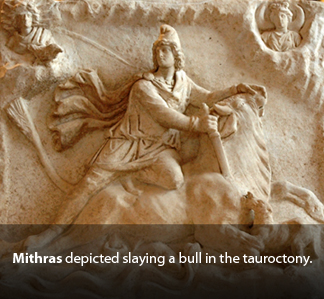 Historians do not hide the fact that Christmas was an invention of the Roman church, designed to compete with the heathen Roman feast of Saturnalia in honor of the sun deity Mithras. Mithras bore remarkable similarity to the Biblical Messiah. The Mithraic feast, like Christmas, was celebrated to commemorate his birth.
Historians do not hide the fact that Christmas was an invention of the Roman church, designed to compete with the heathen Roman feast of Saturnalia in honor of the sun deity Mithras. Mithras bore remarkable similarity to the Biblical Messiah. The Mithraic feast, like Christmas, was celebrated to commemorate his birth.
Notice the remarkable parallels, as detailed by Joscelyn Godwin, professor at Colgate University. He writes that Mithras was “the creator and orderer of the universe, hence a manifestation of the creative Logos or Word. Seeing mankind afflicted by Ahriman, the cosmic power of darkness, he incarnated on earth. His birth on 25 December was witnessed by shepherds. After many deeds he held a last supper with his disciples and returned to heaven. At the end of the world he will come again to judge resurrected mankind and after the last battle, victorious over evil, he will lead the chosen ones through a river of fire to a blessed immortality,” Mystery Religions in the Ancient World, p. 99. Godwin remarks, “No wonder the early Christians were disturbed by a deity who bore so close a resemblance to their own, and no wonder they considered him a mockery of [the Messiah] invented by Satan.”
These two popular movements were vying for dominance in the Roman Empire – one being pagan sun worship, the other Christian. Historian and archaeologist Ernest Renan once wrote, “If Christianity had been halted in its growth by some mortal illness, the world would have been Mithraist” (Marc Aurele, p. 597). Caught in the middle were the Roman emperors, who wanted to unify and solidify their diverse empire. They didn’t need divisive religious factions. For political reasons, the Roman rulership saw great advantage in synchronizing and harmonizing these religious beliefs into one.
So today, much of what is accepted as Bible-based tradition is the direct result of compromising and mixing with heathen religion. Roman Emperor Constantine, a former pagan himself, gave the most significant push to the Christian-pagan blending of teachings like Christmas. Among other things, he would decree that worship for Christianity switch from the seventh day Sabbath to the first day of the week – Sun-day – the day superstitious heathens worshiped the sun. "On the venerable day of the Sun let the magistrates and people residing in cities rest, and let all workshops be closed" (Codex Justinianus lib. 3, tit. 12, 3; trans. in Philip Schaff, History of the Christian Church, Vol. 3, p. 380, note 1).
“This tendency on the part of Christians to meet Paganism half-way was very early developed,” says Alexander Hislop in The Two Babylons, p. 93. Interestingly, Hislop notes that the pagans gave up precious little of their own beliefs and practices. “And we find Tertullian, even in his day, about the year 230, bitterly lamenting the inconsistency of the disciples of Jesus in this respect, and contrasting it with the strict fidelity of the Pagans to their own superstition.”
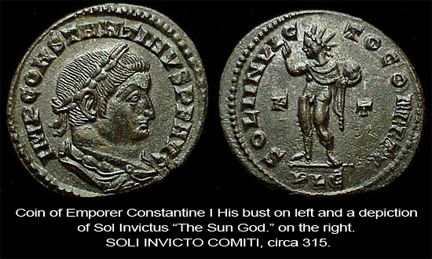
Hislop quotes Tertullian, the most ancient of the Latin church fathers whose works are extant, as he decries the early church observances: “By us who are strangers to Sabbaths and new moons, and festivals, once acceptable to God, the Saturnalia, the feasts of January, the Brumalia, and Matronalia are now frequented; gifts are carried to and fro, new year’s day presents are made with din, and sports and banquets are celebrated with uproar.”
Why a Death Celebration Honoring a Birth?
A mass is a celebration of the Eucharist or the emblems of the death of the Savior. Yet, “Christ-mass” is an observance supposedly in honor of His birth. Why? The answer is found with the secular ancients. Mithras was known as the Sun Deity. His birthday, Natalis solis invicti, means “birthday of the invincible sun.” It came on December 25, at the time of the winter solstice when the sun began its journey northward again. Pagan peoples were overly concerned with life and fertility. They saw life fading in the darkness of winter and so held festivals in honor of and to beckon back the sun to give life and light to the earth once more. The Dictionary of the Middle Ages explains how a funeral mass came to be celebrated as the supposed birthday of the Savior:
“In patristic thought [the Messiah] had traditionally been associated with light or the sun, and the cult of the Sol invictus, sanctioned as it was by the Roman emperors since the late third century, presented a distinct threat to Christianity. Hence, to compete with this celebration the Roman church instituted a feast for the nativity of [the Messiah], who was called the Sol iustitiae .... Usually when Christians celebrated the natalis of a saint or martyr, it was his death or heavenly nativity, but in this case natalis was assigned to be [the Messiah’s]
earthly birth, in direct competition with the pagan natalis,” pp. 317-318. (That is, it was to compete with the birthday of Mithras.) So confused were some about what or whom they were worshiping that Pope Leo I (440-461) chastised Christians who on Christmas celebrated the birth of the sun deity!
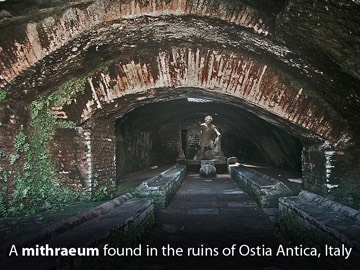 The sun cult was particularly strong at Rome about the time Christmas enters the historical picture, according to the New Catholic Encyclopedia. “The Feast is first mentioned at the head of the Depositio Martyrum in the Roman Chronograph of 354. Since the Depositio was composed in 336, Christmas in Rome can be dated that far at least. It is not found, however, in the lists of Feasts given by Tertullian and Origen,” vol. 3, p. 656.
The sun cult was particularly strong at Rome about the time Christmas enters the historical picture, according to the New Catholic Encyclopedia. “The Feast is first mentioned at the head of the Depositio Martyrum in the Roman Chronograph of 354. Since the Depositio was composed in 336, Christmas in Rome can be dated that far at least. It is not found, however, in the lists of Feasts given by Tertullian and Origen,” vol. 3, p. 656.
Where did Mithraism come from, this Roman religion that venerated the sun deity and influenced Christianity so greatly? Kenneth Scott Latourette in A History of Christianity, traces Mithraism to the mystery religions of Egypt, Syria, and Persia. “Almost all the mystery cults eventually made their way to Rome,” he notes. “They were secret in many of their ceremonies and their members were under oath not to reveal their esoteric rites. Numbers of them centered about a savior-god who had died and had risen again. As the cults spread within the Empire they copied from one another in the easy-going syncretism which characterized much of the religious life of that realm and age,” pp. 24-25.
Nimrod: The Grandfather of Paganism
Clearly, Christmas as the observance of the Savior’s birth did not come into existence immediately. It was not observed for at least three centuries after His birth. But Christmas as a pagan holiday traces back thousands of years to a man named Nimrod, founder of ancient pagan Babylon. Forefather to Mithras, Nimrod began a counterfeit religion in the Book of Genesis that was to compete with the True Faith of the Bible in every conceivable way down through the centuries. The Bible refers to it as the religion of Mystery Babylon — the mother of false religion. Babylon’s false worship is found today in some aspect in nearly all religions, including churchianity.
The Madonna and child theme, which is universal or evident in hundreds of religions down through the centuries, had its origin in Babylon. Nimrod was so full of evil, it is said he married his own mother, who’s name was Semiramis. Semiramis was the first deified queen of Babylon. She is also known variously as Diana, Aphrodite, Astarte, Rhea, and Venus. Her son was Tammuz, also called Bacchus, Adonis, and Osiris. He was the supposed reincarnated Nimrod. He came back to life when the dead yule log was cast into the fire and the evergreen tree appeared as the slain king-deity reborn at the winter solstice (The Two Babylons, p. 98).
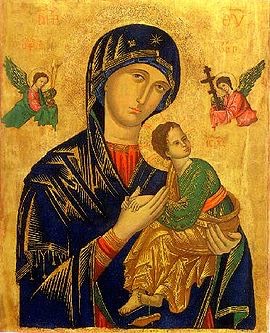
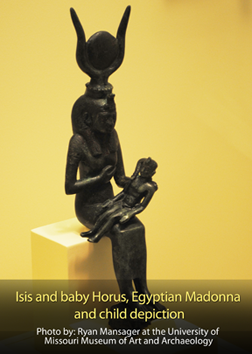
The Two Babylons
The similarities with Biblical elements found among pagan religions is not simply coincidence. It is the design of satan to sidetrack seekers of truth into believing they are worshiping Scripturally.
According to legend when Nimrod died Semiramis, Nimrod’s mother-wife, made the proclamation that Nimrod was not just a carnal human being but was actually deity. The account states that she saw a full grown evergreen tree growing out of the roots of a dead stump. This supposedly symbolized Nimrod reborn. On the anniversary of his rebirth (the time of the winter solstice, December 25), Semiramis proclaimed that Nimrod would visit the evergreen tree and leave gifts under it. (More about the Christmas tree below under the heading: "They Worshiped Trees.")
Saturnalia – Forerunner of Modern Christmas
Tammuz, the Babylonian sun deity, was the first counterfeit savior. The Lord in Ezekiel 8:14-18 condemns ancient Israel for adopting worship of Tammuz, which included sun worship and the asherah (phallic symbol).
14 Then he brought me to the door of the gate of the Lord's house which was toward the north; and, behold, there sat women weeping for Tammuz.
15 Then said he unto me, Hast thou seen this, O son of man? turn thee yet again, and thou shalt see greater abominations than these.
16 And he brought me into the inner court of the Lord's house, and, behold, at the door of the temple of the Lord, between the porch and the altar, were about five and twenty men, with their backs toward the temple of the Lord, and their faces toward the east; and they worshipped the sun toward the east.
17 Then he said unto me, Hast thou seen this, O son of man? Is it a light thing to the house of Judah that they commit the abominations which they commit here? for they have filled the land with violence, and have returned to provoke me to anger: and, lo, they put the branch to their nose.
18 Therefore will I also deal in fury: mine eye shall not spare, neither will I have pity: and though they cry in mine ears with a loud voice, yet will I not hear them.
Elements of this worship are still found in today’s Christmas rites. The Romans worshiped Tammuz as the sun deity Mithras in a special observance called the Saturnalia. The Saturnalia was named for Saturn, otherwise known as Cronus. Cronus is an alias for Tammuz. His wife and mother was Rhea (Semiramis). The Saturnalia, therefore, was just another observance for Tammuz, the Babylonian, counterfeit redeemer. The Romans kept the Saturnalia in December, at the time of the winter solstice, in honor of the returning sun. The festival lasted seven days. “All classes exchanged gifts, the commonest being waxed tapers and clay dolls,” says the Encyclopaedia Britannica, Eleventh Edition.
Legend has it that the Saturnalia was instituted by Romulus under the name Brumalia (from bruma, rneaning winter solstice),
Britannica , p. 232. “The pagan Saturnalia and Brumalia were too deeply entrenched in popular custom to be set aside by Christian influence,” notes the New Schaff-Herzog Encyclopedia of Religious Knowledge, p.48. 
And so the church established the birthday of the Savior to coincide with the heathen feast day. “...the Latin Church, supreme in power, and infallible in judgement, placed it on the 25th of December, the very day on which the ancient Romans celebrated the feast of their goddess Bruma. Pope Julius I was the person who made this alteration” (Clarke’s Commentary).
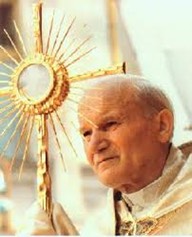
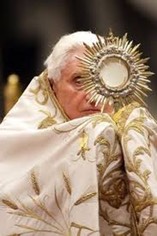
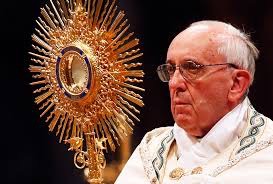
This fact is supported by the New International Dictionary of the Christian Church, p. 223: “December 25 was the date of the Roman pagan festival inaugurated in 274 as the birthday of the unconquered sun which at the winter solstice begins again to show an increase in light. Sometime before 336 the Church in Rome, unable to stamp out this pagan festival, spiritualized it as the Feast of the Nativity of the Sun of Righteousness.” Hislop observes, “That Christmas was originally a Pagan festival, is beyond all doubt. The time of the year, and the ceremonies with which it is still celebrated, prove its origin,” The Two Babylons, p. 93.
This blending of observances only served to confuse worshipers. By the middle of the fifth century, Pope Leo the Great rebuked his over-cautious flock for paying reverence to the Sun on the steps of St. Peter’s before turning their backs on it to worship inside the westward-facing basilica. Even some bishops, like Troy, continued to pray to the sun. He eventually went back to sun worship entirely (from The Early Church, by Henry Chadwick).
Protestants Object to Christmas
As the Roman Empire grew and as merchants traveled, the customs of Christmas spread also. Cultures in northern Europe contributed some of their own traditions, or twists on some unbiblical themes, nearly all of which had a basis in Babylonian paganism. The decorated tree, St. Nick, yule log, wreaths, cookies, berries, mistletoe, bonfires, roast goose, roast pig, wassailing, caroling, and other familiar fixtures were added or embellished for the Christmas-Saturnalia in various countries.
When the Protestant movement attempted to rid itself of the excesses and sins of Roman Catholicism, there also came an opposition to Christmas that almost obliterated it entirely in England. “In England, for example, the Puritans could not tolerate this celebrating for which there was no biblical sanction. Consequently, the Roundhead Parliament of 1643 outlawed the feasts of Christmas, Easter, Whit-suntide, along with the saints’ days,” Celebrations, p. 312.
In 1644 the English Parliament outlawed the holiday, compelling shops to be open that day and condemning plum puddings and mince pies as “heathen.” It was condemned for its pagan roots by the Baptists, the Puritans, the Quakers, the Amish, the Methodists and the Presbyterians.
The fact that Christmas was not looked upon with any kind of legitimacy in early America is evident by the fact that Congress sat in session on December 25, 1789, the country’s first Christmas under the new constitution. Christmas wasn’t declared a federal holiday until June 26, 1870.
In 1659 under Puritan influence a law was passed in Massachusetts to punish anyone who “...is found observing, by abstinence from labor, feasting, or any other way, any such days as Christmas day, shall pay for every such offense five shillings.”
For a period of 12 years the staunch Puritans kept the shackles on Christmas, making it an ordinary day of business and even a day of fasting. Yet “with the Restoration in 1660 the citizens reclaimed Christmas, but it was a different festival from what it had been. The religious aspects were often neglected, with the result that the secularization of the holiday was well under way,” ibid.
In America, strong religious antagonism to the feast of Christmas lasted from 1620 to 1750 – 130 years!
In 1776 General George Washington surprise-attacked the German Hessians on December 25, winning a critical Revolutionary War battle by defeating the Christmas-celebrating, drunken German mercenaries. Obviously, Christmas was not an important celebration for the father of our country!
Henry Ward Beecher, clergyman and lecturer, wrote in 1874 of his boyhood in New England, “To me Christmas is a foreign day, and I shall die so. When I was a boy I wondered what Christmas was. I knew there was such a time, because we had an Episcopal church in our town, and I saw them dressing it with evergreens, and wondered what they were taking the woods in church for; but I got no satisfactory explanation. A little later I understood it was a Romish institution, kept up by the Romish Church.” Eventually the major Protestant denominations accepted Christmas, “although they reacted violently against the corruption of the Christkindl, the Christ Child, into ’Kriss Kringle,’ ” Celebrations, pp. 315-316.
Thanks for the Memories?
Can anyone who sincerely seeks to worship in purity and truth continue practicing a legacy from rank Mystery worship?
“But Christmas gives so many memories,” some may argue. “What’s so wrong with giving the children happiness and joy at this time of the year?” From a purely human standpoint, probably nothing. If Christmas existed apart from a Creator who has very clear expectations for worship, then no harm would be done to celebrate it.
Christmas, however, is a religious holiday as well as a secular observance. Its pagan rites the Lord outright and forcefully condemns in the Scriptures. Because of that fact alone we must heed when He thunders, “Learn not the way of the heathen!” Jeremiah 10:2. Nor is it acceptable to the Father in heaven to take only what seems to be properly religious about Christmas and downplay the pagan attributes.
Those seeking True Worship cannot mix the holy with the profane. Paul writes,“Be not unequally yoked together with unbelievers: for what fellowship hath righteousness with unrighteousness? and what communion hath light with darkness? 2Corinthians 6:14. We simply cannot pretend to be worshiping in truth while partaking in pagan worship rites that the Bible condemns.
What About Ol’ Saint Nick?
Where did the jolly fat man known variously as Santa Claus, Father Christmas, Kris Kringle or Saint Nicholas come from? Santa as children affectionately call him derived from the Dutch figure Sinterklaas.
 Sinterklaas is a traditional winter holiday figure in Aruba, Belgium, and the Netherlands. The Sinterklaas feast celebrates the birth of Saint Nicholas on December 6. He was an early Christian Bishop of Myra in Asia Minor (now Demre) who lived from 280 to 342 CE. In the 11th century, Nicholas’ bones were moved to southern Italy, an area then controlled by Spain. His fame spread throughout Europe. In the north of France he became the patron saint of school children, then mostly in church schools.
Sinterklaas is a traditional winter holiday figure in Aruba, Belgium, and the Netherlands. The Sinterklaas feast celebrates the birth of Saint Nicholas on December 6. He was an early Christian Bishop of Myra in Asia Minor (now Demre) who lived from 280 to 342 CE. In the 11th century, Nicholas’ bones were moved to southern Italy, an area then controlled by Spain. His fame spread throughout Europe. In the north of France he became the patron saint of school children, then mostly in church schools.
The folk feast arose during the Middle Ages. In early traditions students elected one of them as “bishop” on St. Nicholas Day, who would rule until December 28 (Innocents Day). They sometimes acted out events from the bishop’s life. As the festival moved to city streets, it became more lively.
Sinterklaas was assisted by many mischievous helpers with dark faces and colorful Moorish dresses, dating back two centuries. These helpers are called ‘Zwarte Pieten’ (Black Petes). During the Middle Ages Zwarte Piet was a name for the devil. Having triumphed over evil, it was said that on Saint Nicholas eve the devil was shackled and made his slave.
Interestingly the term “Old Nick” that was commonly used for Santa Claus has the meaning of Lucifer or Satan in old English.
The World English Dictionary
says: “Old Nick—a jocular name for Satan.”
The Cambridge Dictionary
entry says: “Old Nick—the Devil—the main evil spirit in the Christian religion.”
Numerous parallels have been drawn between Santa Claus and the figure of Odin, a major god among the Germanic peoples. Odin was sometimes recorded at the native Germanic holiday of Yule as leading a great hunting party through the sky.
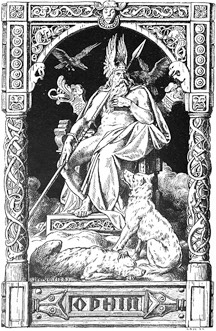 Two books from Iceland—the Poetic Edda, compiled in the 13th century from earlier sources, and the Prose Edda, written in the 13th century by Snorri Sturluson, describe Odin as riding an eight-legged horse named Sleipnir that could leap great distances, giving rise to comparisons to Santa Claus’ reindeer. Further, Odin was referred to by many names in Skaldic poetry, some of which describe his appearance or functions. These include Síðgrani, Síðskeggr, Langbarðr (all meaning “long beard”) and Jólnir (“Yule figure”).
Two books from Iceland—the Poetic Edda, compiled in the 13th century from earlier sources, and the Prose Edda, written in the 13th century by Snorri Sturluson, describe Odin as riding an eight-legged horse named Sleipnir that could leap great distances, giving rise to comparisons to Santa Claus’ reindeer. Further, Odin was referred to by many names in Skaldic poetry, some of which describe his appearance or functions. These include Síðgrani, Síðskeggr, Langbarðr (all meaning “long beard”) and Jólnir (“Yule figure”).
According to Phyllis Siefker the author of Santa Claus, Last of the Wild Men, children would place their boots filled with sugar, carrots or straw, near the chimney for Odin’s flying horse, Sleipnir, to eat. Odin would then reward those children for their kindness by replacing Sleipnir’s food with gifts or candy. This practice survived in Germany, Belgium, and the Netherlands after the adoption of Christianity and became associated with Saint Nicholas as a result of the process of Christianization and can be still seen in the modern practice of the hanging of stockings at the chimney in some homes.
During the Protestant Reformation, the St. Nicholas image was nearly banished permanently to the North Pole. Taking his place was a more secular figure known as Christmas Man, Father Christmas, or Pope Noel. The Dutch clung tenaciously to St. Nick, however, and although his religious attributes died, the profane ones brought by the new Santa live on in the confused minds of youngsters everywhere.
When the Pennsylvania Dutch came to America in the eighteenth century they brought with them the custom of the Christkindl. This “Christ Child” supposedly brought gifts for children on Christmas eve, riding a mule loaded with presents. His name was changed by the English settlers to Kriss Kringle. The notion of his North Pole home was contrived through Scandinavian or Russian tales about north-dwelling wizards.
While Saint Nicholas was originally portrayed wearing bishop’s robes, the modern Santa Claus is depicted as a plump, jolly, bushy, white-bearded man wearing a red coat with white collar and cuffs, white-cuffed red trousers, and black leather belt and boots. This image became popular in the United States and Canada in the 19th century partly because of the significant influence of caricaturist and political cartoonist Thomas Nast.
When we tell our children lies about the existence of fantasies like Santa Claus, we introduce them at an early, impressionable age to the sin of deception. That is inexcusable. Not only do we mislead them into believing myths, but by doing so we also shut out the true Giver of blessings, God Almighty. Proverbs 22:6 says, “Train up a child into the way he should go,” not in the way of traditions that replace the truth. Santa is an insidious, captivating counterfeit (See Rev. 1:13-16; Dan. 7:9).
They Worshiped Trees
Space prohibits us from detailing all of the customs of Christmas and their origins in the mystery religions of ancient peoples, but the Christmas tree deserves special note because of its prominent role.
In Old Testament times an indispensable part of Baal worship involved the asherah, a sacred tree stem or pole (from which we get the May pole and totem pole). The asherah was a carryover of even more ancient tree worship. These asherah were used by the Canaanites in what the King James Version calls “groves.” Typically asherah sites included an altar and a stone pillar (a survivor of even older stone-worship).
Some historians believe asherahs were connected with phallic worship. “At first [asherah] may have been living trees (Deut. 16:21), but in later usage were wooden poles, perhaps erected to represent a tree,” Eerdman’s Bible Dictionury, p. 93. Rather than condemn and destroy this rite of Canaanite Baal worship that they found in the Promised Land, the Israelites, as was their custom, chose instead to indulge in it. And because of that the Lord allowed Israel to be taken into captivity and nearly destroyed. Read 2Kings 17:9-11.
The “green tree” is mentioned 13 times in Scripture and in every instance it is linked with idolatry! Can we find much difference between idolizing trees anciently and adoration of Christmas trees today? Notice what the prophet Jeremiah wrote in connection with tree-idol worship:
“2 Thus saith the Lord, Learn not the way of the heathen, and be not dismayed at the signs of heaven; for the heathen are dismayed at them.
3 For the customs of the people are vain: for one cutteth a tree out of the forest, the work of the hands of the workman, with the axe.
4 They deck it with silver and with gold; they fasten it with nails and with hammers, that it move not.
5 They are upright as the palm tree, but speak not: they must needs be borne, because they cannot go...” Jeremiah 10:2-5.
Although based in mystery worship, the modern Christmas tree traces to Europe. “...Tree worship is well attested for all the great European families of the Aryan stock. Amongst the Celts the oak-worship of the Druids is familiar to everyone. Sacred groves were common among the ancient Germans, and tree-worship is hardly extinct among their descendants at the present day” (The Golden Bough, p. 58).
The ancients were very concerned about the dead vegetation in December and the waning of the sun. Fir trees were always green, symbolic of life, and to the ancients represented immortality in a dead world. They were often set on fire to portray and beckon back the sun, hence the modern practice of stringing trees with Christmas lights and round bulbs and balls. Ultimately, the Christmas evergreen springs from that old Babylonian, Nimrod. It represents the resurrected and reincarnated man-deity. “Now the Yule Log is the dead stock of Nimrod, deified as the sun-god, but cut down by his enemies; the Christmas tree is Nimrod redivivus – the slain god come to life again,” The Two Babylons. p. 98. He was reborn as his son Tammuz.
Yule (from huel meaning wheel) was a Germanic and Celtic sunfeast in the period December-January which became absorbed into Christmas. It commemorated the turn of the sun and the lengthening of the day. The Christmas tree wasn’t found in America until 1821, brought by the Pennsylvania Germans. Christmas itself wasn’t recognized until 1836, when Alabama became the first state to make it a legal holiday.
Virtually every Christmas custom is connected with some man-made rite or heathen tradition with little to do with the Bible.
The Right Alternative
In the final analysis, how could our Heavenly Father and Jesus, His only begotten Son, expect His people to observe Christmas, which is so thoroughly steeped in heathen ritual? The month as well as the day of the Savior’s birth has remained hidden. The answer is obvious and clear – The Lord never wanted it to be observed! If He did, He would have told us when and how it was to be kept, just as He did for those days He commanded in His Word.
Once we are enlightened to the truth of Christmas, we find the holiday not only distasteful but unacceptable to Our Heavenly Father. Israel was condemned for sun worship in Ezekiel 8. Similar rites based in sun and fertility worship come alive each December 25.